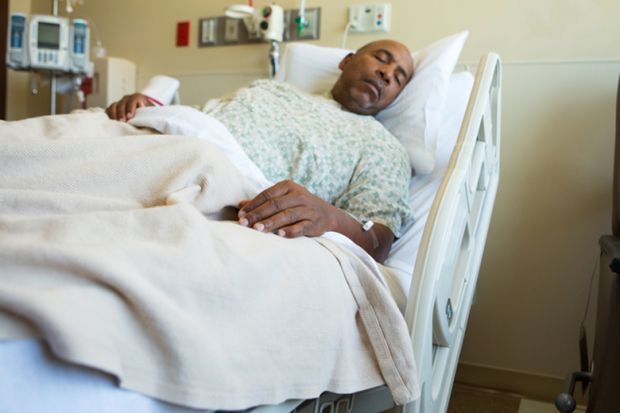In the US, the poor die earlier, black Americans die earlier and poor urban black Americans die earliest of all. In this thoughtful and compelling book, David Ansell draws on almost four decades as a hospital doctor in Chicago in addressing these striking inequalities in health and laying bare the underside of the American dream.
The Death Gap shows the scale of the human cost of income inequality in the US. In Chicago, people living in Washington Park will die 14 years earlier, on average, than those in nearby Hyde Park. Ansell convincingly argues that these vast inequalities in life and death are related not to behaviour or biology but to “structural violence” within the US’ political, economic and healthcare systems.
This passionate polemic uses powerful patient stories to highlight the importance of neighbourhood conditions, healthcare inequalities and poverty in explaining the health gap between black and white Americans. Drawing on detailed case studies of racial inequalities in breast cancer mortality, the health consequences of mass imprisonment, immigration status and access to healthcare, the Chicago heatwave and Hurricane Katrina, Ansell vividly unpicks a spider’s web of causality.
A particular focus here is the role of the US healthcare system in exacerbating socio-economic and racial inequalities in health. We learn about the problems of Obamacare through the story of one woman’s stroke, and the fear and difficulties faced by undocumented migrants in getting access to essential healthcare is demonstrated through Sarai’s transplant story. These individual narratives are all backed up by sound social epidemiology showing the wider population patterns.
I have worked in the field of health inequalities for more than 15 years and, still, I found some of the statistics presented in this book extremely shocking: 1.5 million black men missing through mass incarceration; the extent of the healthcare divide between black and white neighbourhoods, arguably comparable to differences between hospitals in East and West Germany in the 1980s; the attempt to cover up the culpability of the city authorities in the Chicago heatwave deaths; and the collusion of city authorities, real-estate agents and mortgage lenders in creating black inner-city ghettos in major US cities from the 1960s onwards.
Ansell also does not shy away from prescribing what is needed to cure these social, economic and political ills, and provides examples of how communities have organised to improve their health and healthcare as well as outlining the role that medical professionals can take, all the way through to the importance of political change at a government level.
This is a wide-ranging and very important book. Easy to read and engaging, it makes the social determinants come alive. Moreover, it complements UK research in this area and can be seen as a dire warning of what might await us if a more American approach to healthcare becomes part of a post-Brexit trade deal with Donald Trump. Reading this makes you value the National Health Service and understand the fear it replaced.
Clare Bambra is professor of public health in the Institute of Health and Society, University of Newcastle, and author of Health Divides: Where You Live Can Kill You (2016).
The Death Gap: How Inequality Kills
By David A. Ansell
University of Chicago Press, 240pp, £19.50
ISBN 9780226428154 and 9780226428291 (e-book)
Published 2 June 2017
POSTSCRIPT:
Print headline: Life expectancy is a zipcode lottery
Register to continue
Why register?
- Registration is free and only takes a moment
- Once registered, you can read 3 articles a month
- Sign up for our newsletter
Subscribe
Or subscribe for unlimited access to:
- Unlimited access to news, views, insights & reviews
- Digital editions
- Digital access to THE’s university and college rankings analysis
Already registered or a current subscriber? Login




